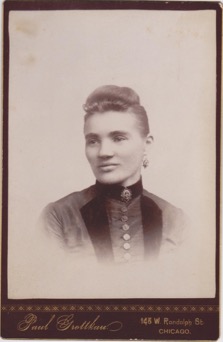 [When, several years ago, my friend and colleague Colleen Thornton introduced me to the research she had begun based on a photograph she purchased on eBay, I offered her as much space as she needed at the blog for publication of her results.
[When, several years ago, my friend and colleague Colleen Thornton introduced me to the research she had begun based on a photograph she purchased on eBay, I offered her as much space as she needed at the blog for publication of her results.
Thornton’s painstaking inquiry has introduced to the medium’s history two extraordinary figures: a German-born 19th-century U.S.-based anarcho-socialist photographer, Paul Grottkau, and his subject, the African American anarcho-socialist Lucy Parsons, widow of one of the men railroaded to public hanging in the prosecution of the suspects of the Chicago Haymarket Riot. In the cabinet portrait that Thornton discovered the destinies of these two notable left-wing figures intersect, as her essay makes clear.
Thornton offers a self-contained, persuasive, and compelling analysis, a prime example of what close attention to individual photographs can reveal. This is a first-rate work of scholarship, and a significant addition to the literature. It marks the blog’s first (but perhaps not last) publication of a fully resolved piece of research.
Thornton’s article as written comes in two parts, complete with extensive footnotes. To optimize the online reading experience, I have converted the notes to links whenever possible. An addendum to the series appears below. Click here for an index page with links to all installments in this series. — A.D.C.]
•
Paul Grottkau: Anarchist Photographer
Addendum: New Evidence of Authorship for a Portrait Photograph of Lucy Parsons
by Colleen Thornton
A recent development has brought to light new information concerning one of the best-known photographic images of Lucy Parsons. On March 10, 2020, a rare example of the 1886 three-quarter-length photographic portrait of Mrs. L. E. Parsons was offered at auction by the Swann Auction Galleries in New York City.[1]
•
Over time, this image became the most widely reproduced photo of Lucy Parsons, ubiquitous in national mass media from 1886 well into the twentieth century. This specific albumen print is significant for the information stamped in gilt on the bottom of the cabinet card: the name and address of the photographer, L. Gogler, along with the statement, “Mrs. L. E. Parsons, copyright and published by herself.”
•
No credit to or mention of the photographer Louis Gogler has turned up in the many publications that have reproduced this image. Furthermore, the caption indicating that Lucy Parsons claimed ownership of the copyright as publisher of this photo provides hard evidence that she intentionally commissioned cabinet cards for publication and distribution to the general public.
It is well known that Lucy supported herself with the sale of self-published pamphlets and books of her own and her late husband Albert’s writings throughout her life. After Albert’s death in 1887 (he was executed by hanging after conviction for presumed involvement in Chicago’s Haymarket Bombing), this self-publishing enterprise rapidly accelerated, serving to disseminate Lucy’s political agenda, market her “brand” as the living icon and torch-bearer of the Haymarket martyrs, and put food on the table. This particular photo not only proves that Lucy’s promotional efforts included marketing her personal image but shows that she claimed total control of it in the public realm.
Previously in this investigation of the Paul Grottkau portrait of Lucy Parsons I have posited the theory that, in anticipation of her 1888 British speaking tour, Parsons and Grottkau collaborated on an image that would better serve to promulgate her ideological mission and personal narrative, particularly Lucy’s carefully concocted origin story. That Lucy had already actively marketed cabinet-card copies of her 1886 portrait photo lends credibility to this theory. The Gogler photo was being used by the news media of the day to lend visual support to reports of her assumed (and disputed by her) mulatto heritage, a public perception that Lucy was determined to dispel. The creation of a new portrait photo, crafted by a trusted colleague — Grottkau — with a vested interest in the true purpose of that image, would have been a logical, strategic, and timely decision for Lucy Parsons to take.
![Cabinet card photographic portrait of a "mixed-race" lady, taken sometime in 1888 - 1889, by "Paul Grottkau, 148 W. Randolph St. Chicago." [Collection of the author]](https://www.nearbycafe.com/artandphoto/photocritic/wp-content/uploads/2020/05/Paul_Grottkau_Lucy_Parsons_cabinet_card_lg.jpg)
Cabinet card photographic portrait of a “mixed-race” lady, taken sometime in 1888-1889 by “Paul Grottkau, 148 W. Randolph St. Chicago.” [Collection of the author]
•
A search of the U.S. Copyright Office’s online archive of registered copyrights did not turn up any images copyrighted by Lucy Parsons, or L. Parsons, nor for that matter any by the photographers Louis Gogler and August Brauneck. Although the copyrighting of individual photographs and negatives had become established in law in March 1865 and upheld by the Supreme Court in March 1884, the actual copyrighting of photographs would not become a professional “best practice,” in today’s terminology, until the reproduction of photographs via offset lithography became the technological standard for newspapers and magazines.[2]
And in considering her deep and fervent antipathy for the federal government and its many-tentacled bureaucracy, it may be that Lucy’s assertion of copyright ownership and publishing privileges is an assertion of legal power (ironic as this would be for an avowed anarchist) and an act of intimidation aimed at those who might use or misuse her image without her knowledge or consent.
•
The Photographers Behind the 1886 Portraits of Lucy Parsons
The two German American photographers who produced these commissioned images of Lucy Parsons while she was visiting New York City in 1886 were August Brauneck and Louis Gogler.
Brauneck and Gogler were each listed as both a professional “photographer” and as an “artist” in a variety of New York business and professional directories during the late 19th century. It appears that they were marketplace competitors who successfully promoted themselves to the buying public as expert practitioners of both photography and the fine arts, or some presumed combination of the two.
August (A.) Brauneck’s stunning head shot of Lucy Parsons wearing an ostrich-plumed hat graces the cover of Jacqueline Jones’s biography, Goddess of Anarchy: The Life and Times of Lucy Parsons, American Radical (2017), and his three-quarter-length photo of her is also reproduced in the book. Both are sourced from the Library of Congress.[3]
•
A cropped version of Louis Gogler’s photo is reproduced on the cover and on page 12 of Carolyn Ashbaugh’s biography, Lucy Parsons, American Revolutionary (1976). In the “Acknowledgments” to that volume, the only information regarding this photo is that it was published in the 1903 edition of The Life of Albert R. Parsons (written by Lucy Parsons) and provided to the author courtesy of the Chicago Historical Society. No photographer is credited in the Society’s catalogue, and the image itself is a page from that Albert Parsons biography, reproduced with only the cursive signature of Lucy Parsons beneath it.[4]
In both August Brauneck’s and Louis Gogler’s three-quarter-length photos, Lucy is wearing exactly the same outfit, jewelry, hairdo, and is similarly posed. But there are two distinct differences between these photographers’ representations. In both of Brauneck’s photos the background is a solid, cold white; and, in the full-length version, Lucy wears tan kid gloves while holding a scroll in her hands. In Gogler’s photo, Lucy holds the scroll without gloves as she stands in front of a painted architectural backdrop.
Gogler’s photo is usually reproduced without attribution to a photographer, and often with Lucy’s signature beneath it. Based on the sitter’s attire it would have been an easy assumption that these photos, and other variations of them, were all taken by the same, known photographer, August Brauneck — until now.
•
August Brauneck
Prior to emigrating from Germany to America, August Brauneck was a partner in the firm Brauneck & Maier of Mainz, Germany, renowned for innovative, high-quality “lichtdruck” (collotype and/or heliographic) prints. As experts in new photographic reproductive technologies, Brauneck & Maier developed a high-speed process using a machine of their own design that replaced the hand-press method. In the October 1, 1875 edition of The British Journal of Photography, on p. 475, the excellent results produced by their new photo-mechanical process is glowingly described.
The partners exhibited their heliography — monochrome prints derived from photographs of paintings and other artworks — at the 1876 United States Centennial International Exhibition in Philadelphia in Group XXVII (sculpture, painting and graphic arts), for which they were awarded a commendation for their “rapid acting lichtdruck process.”[5] The firm continued to receive international recognition when they were invited to display 38 of their photographic prints in the “Caxton Celebration,” a major international exhibition of state-of-the-art printing held in London in 1877.[6]
The Library of Congress catalogue notes that Brauneck was registered in New York City directories in the 1880s and 1890s. He was also listed in the 1893 New York Art Guide and Artists’ Directory on p. 145 as a “crayon artist,” with a studio located at 1720 Second Avenue. [Editor’s note: From the late 19th century through at least the 1930s, the craft of the “crayon artist” involved enhancing enlargements of photographs. In commercial studio portraiture of that period much detail often got lost during the enlargement process; the crayon artist improved them with charcoal or pastels, not infrequently adding color as well. The results are often visible in the commercial studio work of that era. In a larger studio one or more assistants might handle those chores; in smaller studios the photographer would undertake them him- or herself. — A.D.C.]
According to the professional journal The Photographic Times & American Photographer, published in 1887,
“Mr. A. Brauneck, formerly the proprietor of one of the largest Lichtdruck establishments in Germany and the first to apply steam power for printing from photographic plates, has left in our office several very beautiful specimens of his work, reproductions of oil paintings. Mr. Brauneck is an expert in several of the mechanical printing processes and is now open for an engagement. The work which he has shown us speaks well for his abilities.”[7]
•
Louis Gogler
Meanwhile, in the 1872 edition of Boyd’s New York State Business Directory and Gazetteer, Louis Gogler was listed as an “artist” at 153 East Houston Street. In 1888, Gogler was profiled in Illustrated New York, The Metropolis of To-Day, and described as a “Photographer, Portrait Painter and Crayon Artist, Dealer in Artists Materials and Manufacturer of Picture Frames, Cornices, Pier Glasses and Mantle Mirrors.” By that time his place of business had been located at 350 and 352 Bowery for 15 years.
The following excerpt also helps to date Louis Gogler’s arrival in New York City to 1867:
“This enterprising and popular establishment was founded fifteen years ago by Louis Gogler, a native of Germany, but for the last twenty one years a resident of New York. Mr Gogler’s establishment is a very extensive and comprehensive one in which a great variety of wants may be most satisfactorily allayed including, as it does, photographing, portraits in oil and crayons, artists and gilders materials, picture frames, cornices, pier glasses, mantel mirrors etc.
The premises occupied comprise an entire building of three floors together with the upper part of the adjoining house. … In the portrait department the appointments are handsome and attractive. The work done in this department is of a high order of merit. Sitters are posed by Mr Gogler who is an artist of marked ability and most careful attention is given to every detail which is likely to enhance the beauty and faithfulness of the portrait. More praise still can be given the oil and crayon work done by Mr Gogler for in these the artistic genius of the gentleman shows itself. Mr Gogler’s merit as an artist can be verified by hundreds of patrons whose houses are adorned by the products of his skill and genius. …
[T]he business extends over a wide area of country and is both wholesale and retail in character. … His establishment is the largest of its kind on the Bowery and he is a recognized authority in matters relating to the various matters which compose his business. His unfailing courtesy and his many able qualities have secured him a host of friends both in and out of the city.”[8]
•
Lucy Parsons thus chose two highly regarded, technically proficient New York City photographers to take her photo in 1886. It’s probably not a coincidence that, like her friend and colleague Paul Grottkau, both also happened to be German Americans with flourishing businesses, who traded on artistic and technical excellence. Their talents ensured that these portrait photos captured the public’s attention for decades to come. But one question remains unanswered: Why did Lucy hire two different photographers to take almost identical photos? Now that we know that she chose to market Gogler’s photo, we can speculate that perhaps she was not satisfied with August Brauneck’s stark impression and therefore commissioned Louis Gogler to produce a warmer interpretation.
•
Notes:
[1] As listed in Swann Auction Galleries brochure, March/April 2020, pp. 3-4, indicating its inclusion in “Printed & Manuscript Americana Auction,” Sale 2533, March 10th, 2020. Listed as Lot 197, estimate: $800-1,200; price realized: $2,250. Detailed description online at https://catalogue.swanngalleries.com/Lots/auction-lot/(RADICALISM)-Gogler-L;-photographer-Cabinet-card-of-the-labo?saleno=2533&lotNo=197&refNo=767145
[2] “In Burrow-Giles Lithographic Co. v. Sarony, the Supreme Court upholds the copyrightability of photographs. Napoleon Sarony, a well-known photographer of theatrical stars, photographed Irish author Oscar Wilde in 1882 when Wilde visited New York.” https://www.copyright.gov/timeline/timeline_19th_century.html.
[3] https://www.loc.gov/resource/cph.3b16504/; LC-USZ62-48791.
[4] https://explore.chicagocollections.org/image/newberry/115/b854p8d/; collection catalogue reference: https://webvoyage.carli.illinois.edu/nby/nby/nby/cgi-bin/Pwebrecon.cgi?DB=local&v1=1&BBRecID=200620.
[5] United States Centennial Commission Reports and Awards, Group XXVII, #256, Brauneck & Maier, Mentz, Germany, Heliography, Commended for rapid acting lichtdruck (collotype) process, p. 73.
[6] Caxton Celebration Catalogue, Art of Printing, Editor, George Bullen, Esq., F.S.A., Keeper of the Printed Books, The British Museum, 1877, South Kensington, London, England, p. 327, No. 2974: Photographic Prints “Lent by Messers Brauneck and Maier … Thirty-eight specimens of permanent photographs produced by machinery of their own invention.”
[7] The Photographic Times & American Photographer, Vol. 17, 1887, W. I. Lincoln Adams, Editor, Scovill Manufacturing Company, Publishers, page 48.
[8] Illustrated New York, The Metropolis of To-Day, 1888, International Publishing Company, 102 Chambers Street, NY, NY, page 241.
•
Picture credits:
1. Louis Gogler, cabinet-card portrait of Lucy Parsons, 1886.
2. Louis Gogler, cabinet-card portrait of Lucy Parsons, 1886 (detail).
3. Photo of Lucy Parsons by Paul Grottkau, Chicago, 1888-89. Collection of the author.
4. Cover of Goddess of Anarchy, The Life and Times of Lucy Parsons, American Radical by Jacqueline Jones (New York: Basic Books, 2017), derived from photo of Lucy Parsons by August Brauneck, New York, 1886, Prints & Photographs Division, Library of Congress.
5. Cover of Carolyn Ashbaugh, Lucy Parsons: American Revolutionary (Chicago: Charles H. Kerr Publishing Company, 1976), derived from photo of Lucy Parsons by Louis Gogler, New York, 1886.
6. Photo of Lucy Parsons by August Brauneck, New York, 1886, as published in the Chicago Tribune, http://digitaledition.chicagotribune.com/tribune/article_popover.aspx?guid=552e070e-05f8-4687-9d2a-8385caf68292.
•
Click here for an index page with links to all installments in this series.
•
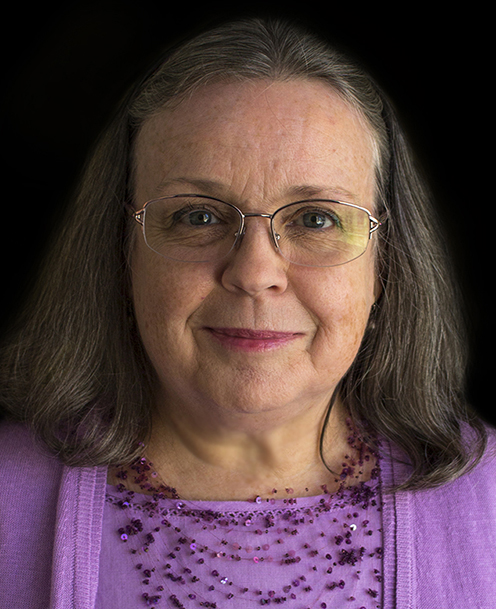 Trained as a painter/printmaker in NYC art schools, Colleen Thornton over the past four decades has focused on fine-art curation and research, arts advocacy, administration and fundraising, and business development. She co-founded and was executive director of City Without Walls Gallery in Newark, NJ. While living in Europe (UK and Denmark) for two decades she worked in the fine arts and architecture on various projects, including fundraising, gallery exhibitions, and international conferences.
Trained as a painter/printmaker in NYC art schools, Colleen Thornton over the past four decades has focused on fine-art curation and research, arts advocacy, administration and fundraising, and business development. She co-founded and was executive director of City Without Walls Gallery in Newark, NJ. While living in Europe (UK and Denmark) for two decades she worked in the fine arts and architecture on various projects, including fundraising, gallery exhibitions, and international conferences.
Thornton has built a substantial collection of 19th- and early 20th-century vernacular photography, Japanese ukiyo-e, and Scandinavian works on paper. As a private dealer, she has added to the collections of several major museums.
With former U.S. Ambassador to Denmark Richard N. Swett, FAIA, Thornton researched and co-authored the book Leadership by Design: Creating an Architecture of Trust (2005). Her writings on cultural topics, including photography, have been published in the U.K., Denmark and the U.S. To contact Colleen Thornton, click here.


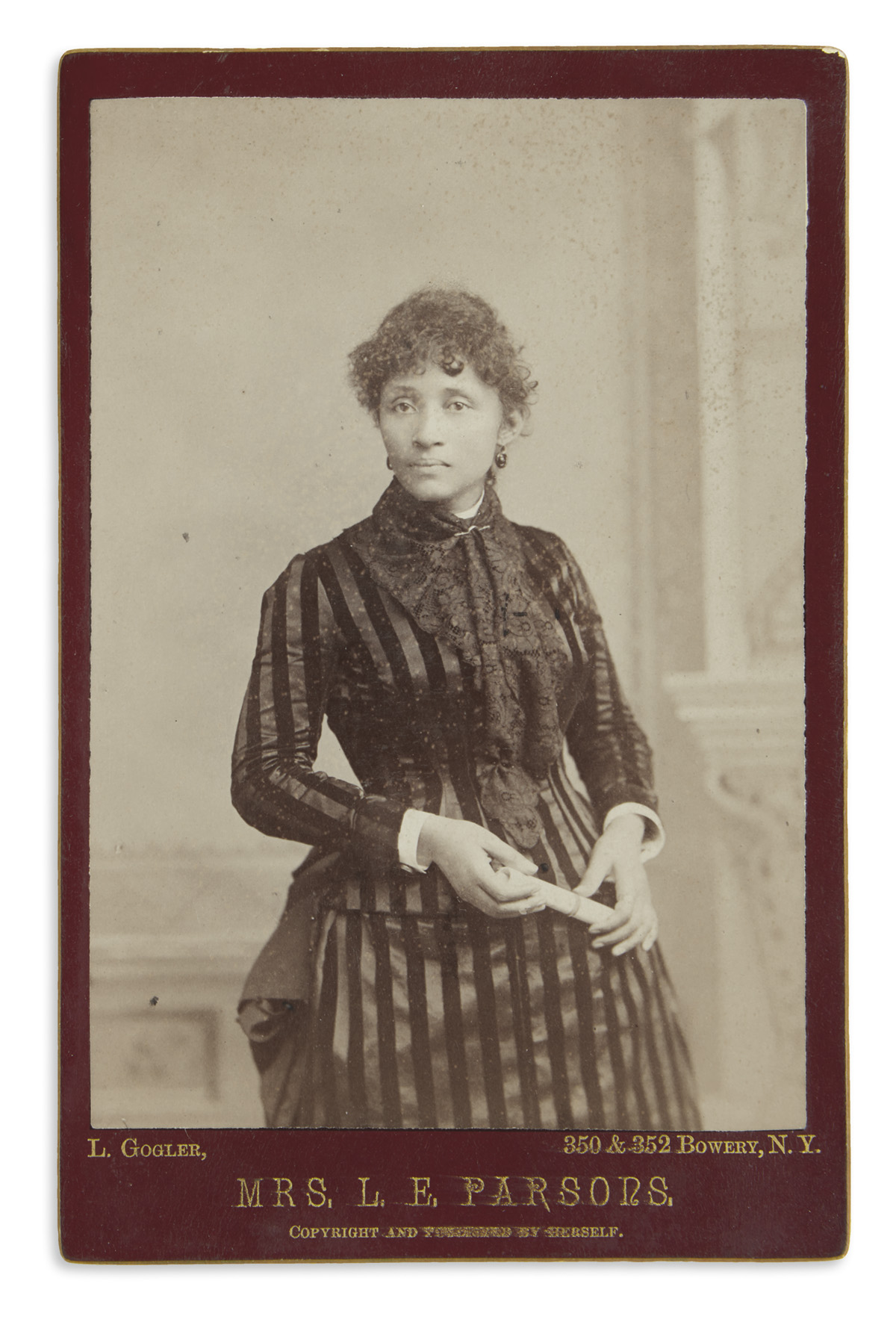

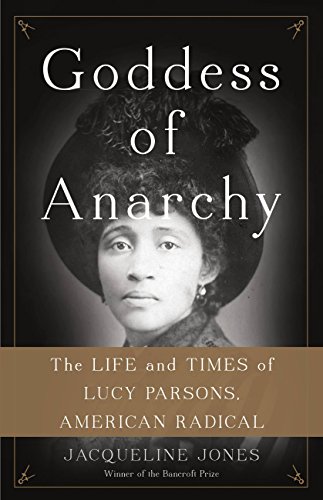
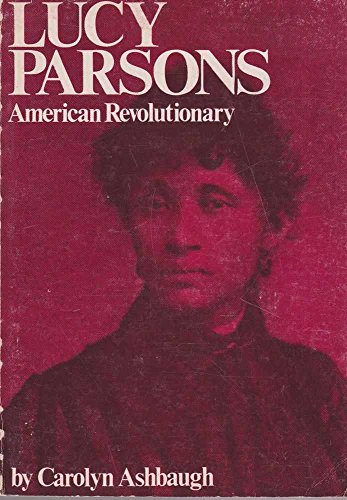
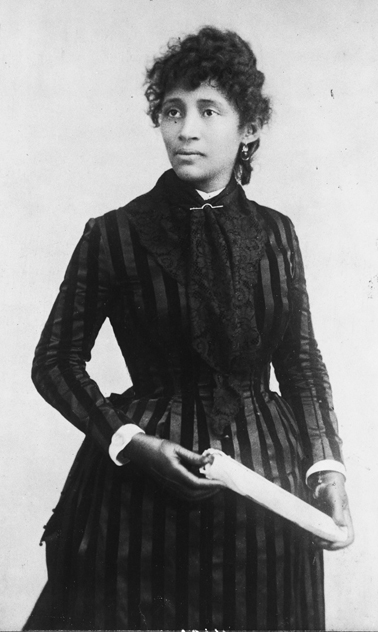
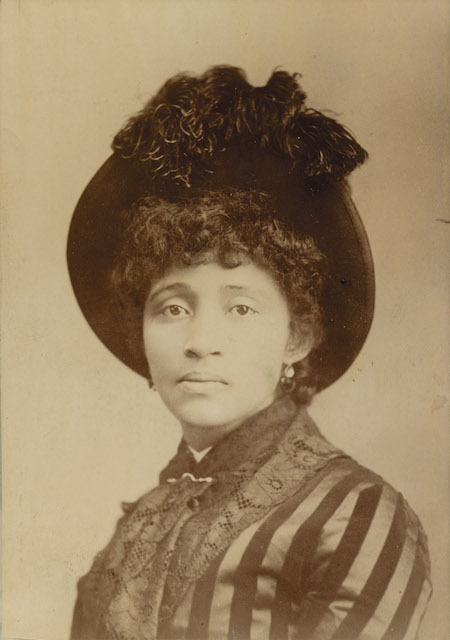
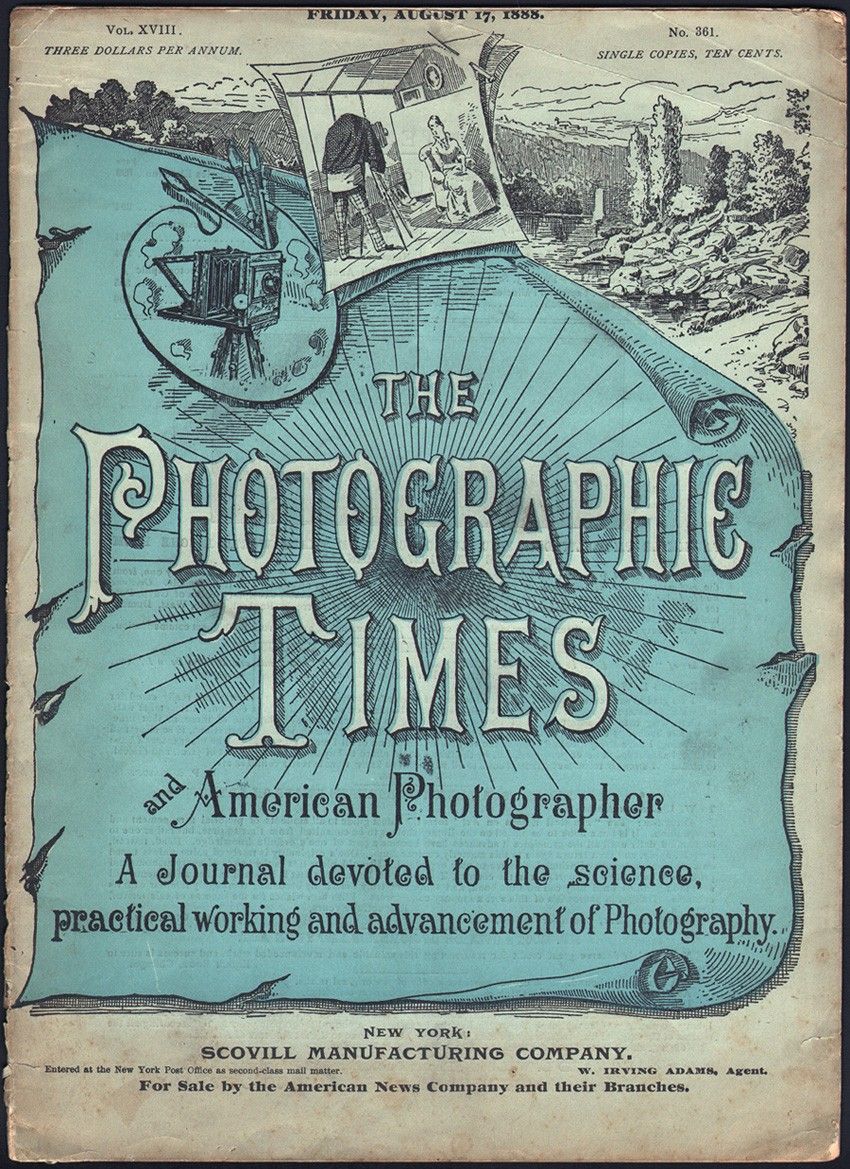
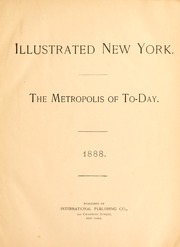




Kudos to Ms. Thornton for her rigorous dissection of Mr. Grottkau’s image, leading to this thought-provoking examination of Lucy Parson’s public life and promotional motivations. A splendid illustration of how a single image can become a stepping stone to disremembered individuals, histories, and social movements that are as relevant today as they were 130 years ago. Thornton’s narrative touches upon a host of social issues that still resonate in our culture and via the media, including workers rights, racial profiling, social and economic justice in America, and the power of photography to influence and mold our perceptions. Worthy causes and worrisome concerns that will resurface as long as social imbalances persist and human nature remains unchanged. Case studies such as this, and Allan’s oeuvre, should be essential parts of the visual education every child receives. The 3 R’s were never more important: Reading, wRiting, and Ratiocination! Thank you Colleen.
Hey, I don’t if you or Thornton is aware of it, but there is one more photograph of Lucy Parsons by Louis Gogler. Check this out:
https://www.etsy.com/listing/1481103306/goddess-of-anarchy-rare-1886-cabinet